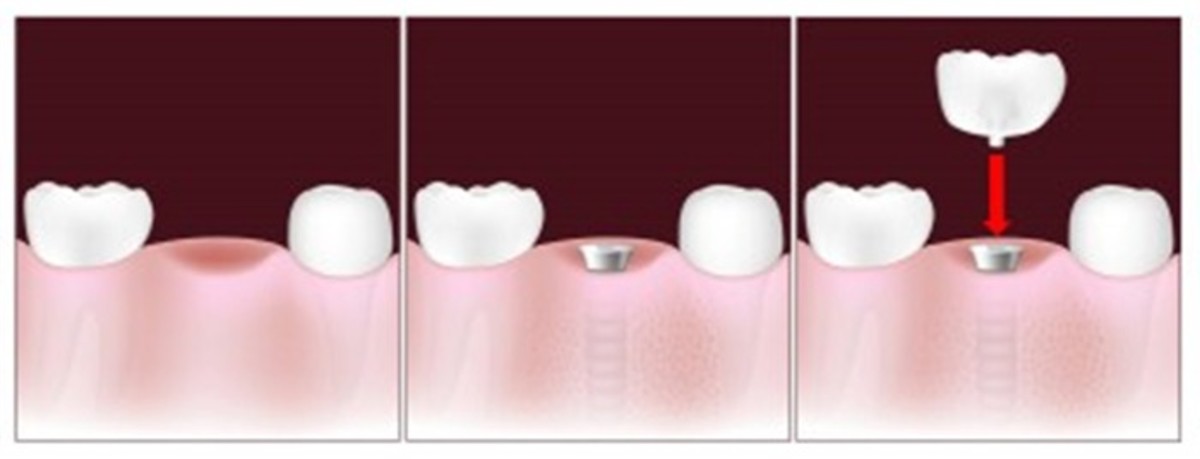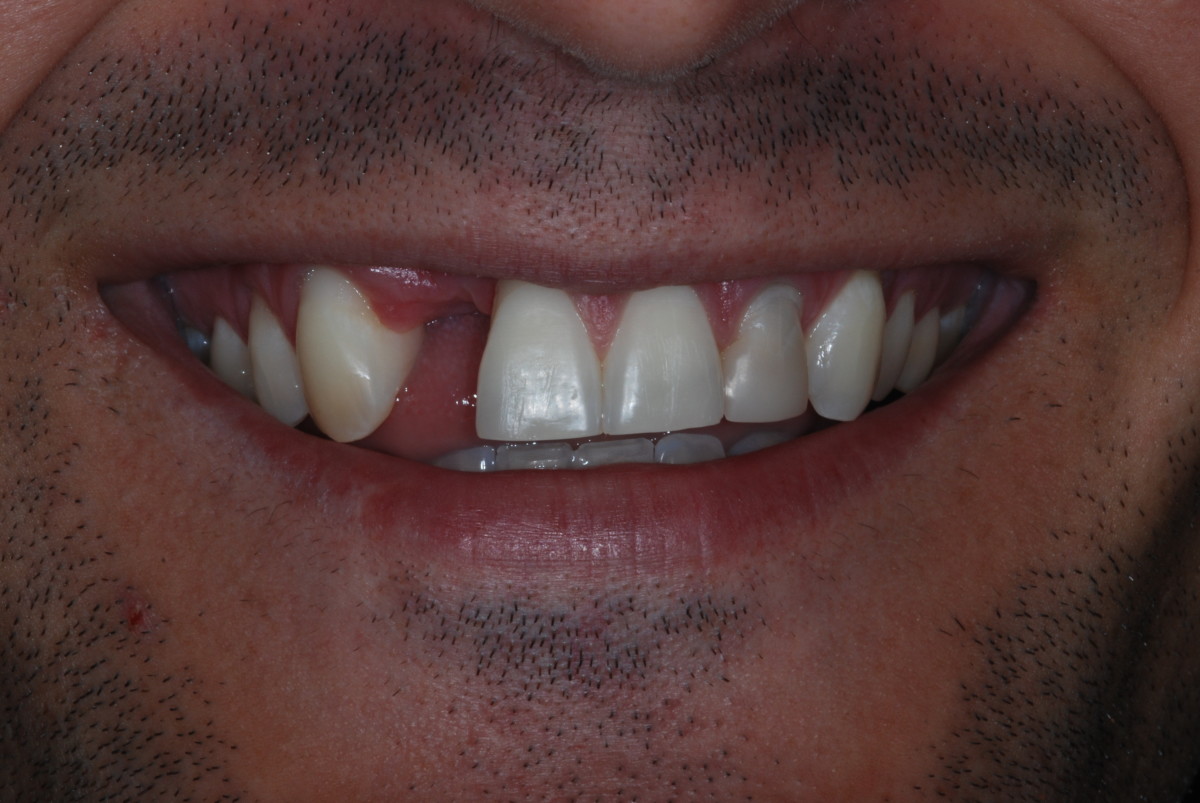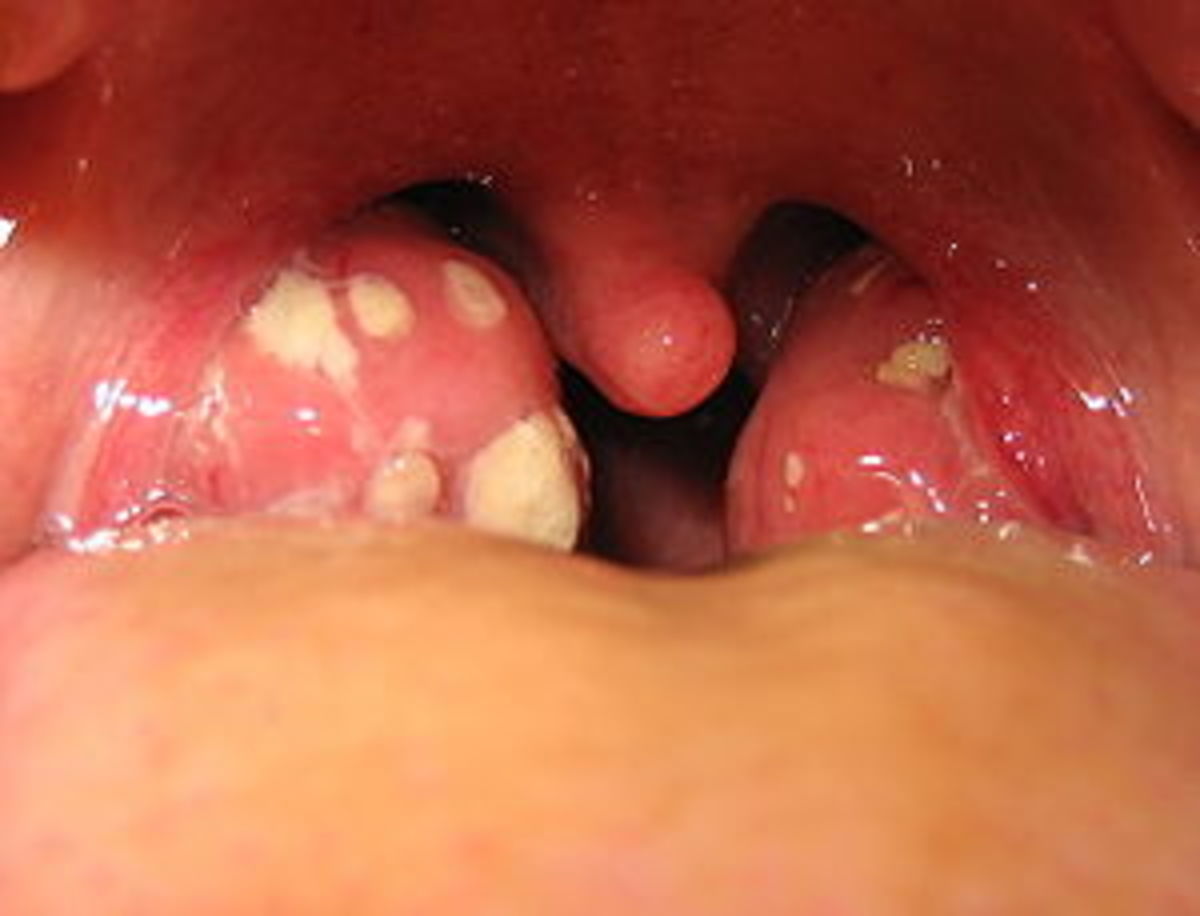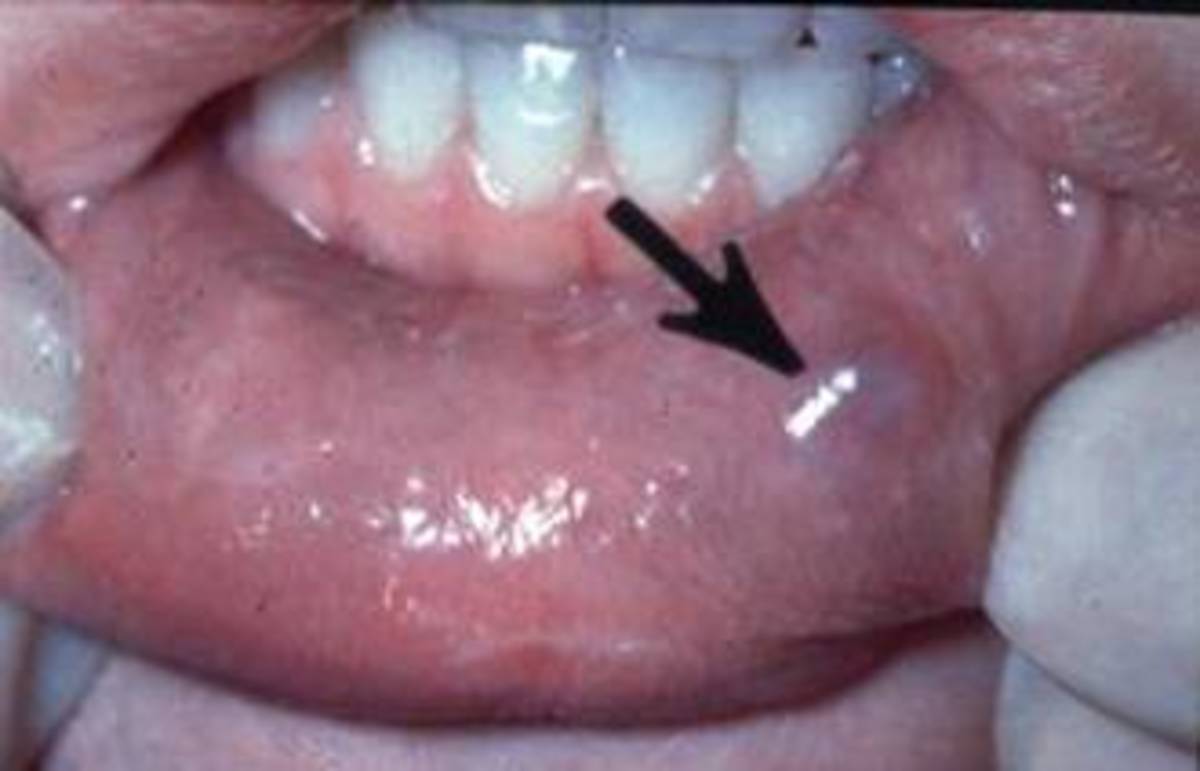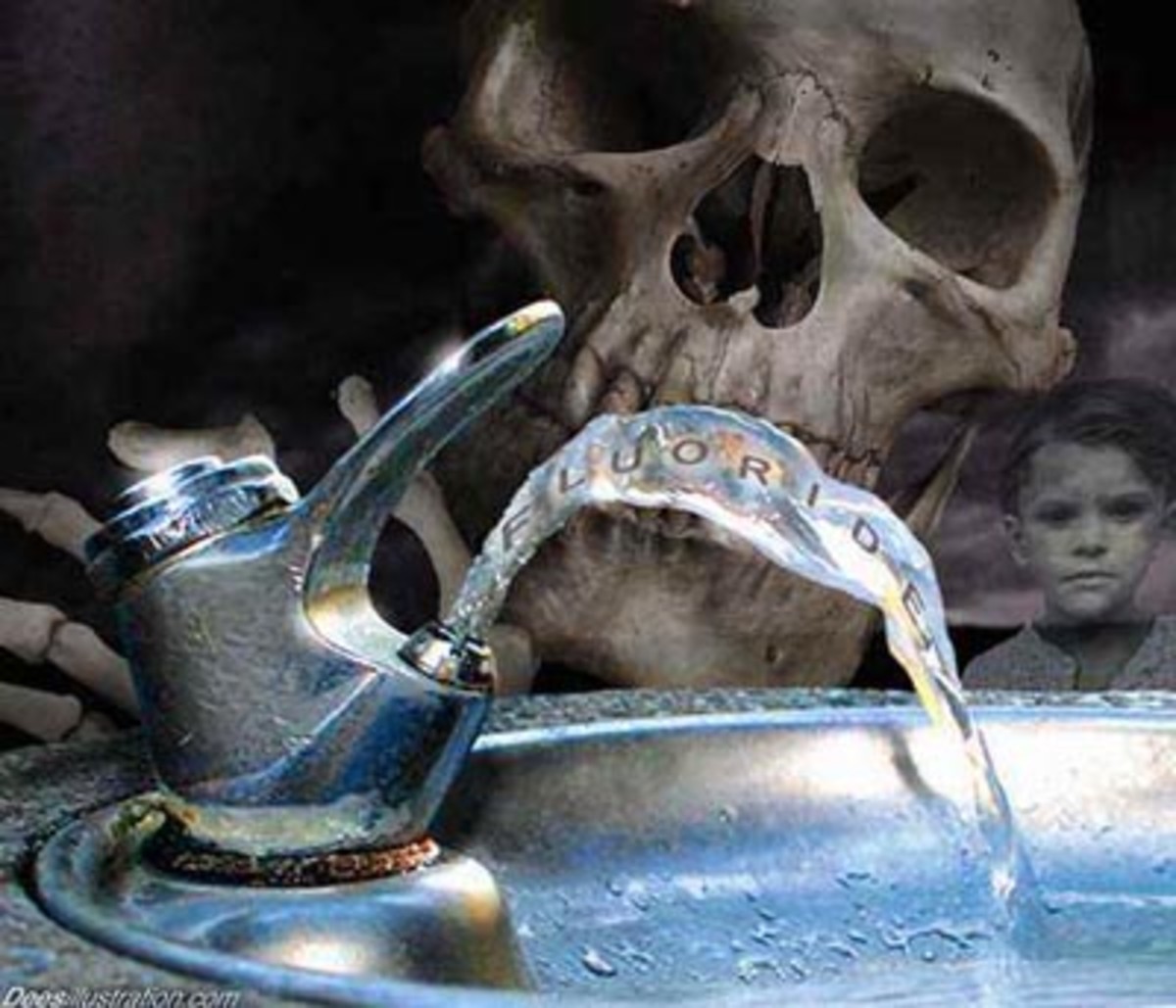Dental Implants: Advantages, Procedure, Cost and More
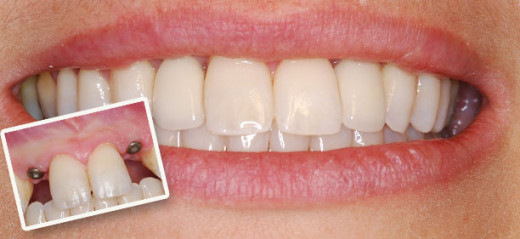
Implantation means that the physician put foreign material (eg: plastic, metal or even biological tissue) in the human body, "planting", where it then takes on a particular function. In the case of dental implants, the dentist or oral surgeon anchors a metal pin made of titanium fixed in the jawbone, where it fuses with the surrounding bone tissue. The dental implant then serves as a tooth root of a tooth structure.
Dental implants can provide the basis for dental crowns, dental bridges, partial and full dentures.
The dentist can put single crown or bridge on each dental implant. Therefore, the option of the dentures is particularly advantageous for tooth loss in the anterior region. Dental implants satisfy not only aesthetic claims, but also restore the masticatory function of the teeth and prevent the degeneration of the jaw, which often occurs with tooth loss. In this way, dental implants can also increase the general well-being.
Only if the health of the maxilla or mandible permit, the dentist or oral surgeon will put the dental implants into the jawbone. After a healing period of about three to six months, the implants are anchored permanently in the jaw.
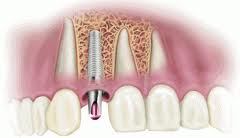
Historical
The history of dental implants start at the beginning of the 19th Century. The implants are made of metals such as silver, gold, platinum and lead. But there were also dental implants made of rubber, caoutchouc and ceramics. The artificial teeth were mostly inspired by the natural tooth shape. They placed this teeth immediately after tooth extraction in the resulting hole in the jawbone.
At the end of the 19th Century, when the inventions of local anesthetics, the drill and the X-rays promoted the advancement in dentistry, implantology also developed further.
In 1937, Strock succeeded for the first time at Harvard University to anchor a screw-shaped dental implant made of a chrome-cobalt-molybdenum compound in the jaw. Since 1960, the metal titanium introduced as a suitable material for dental implants in the jawbone.
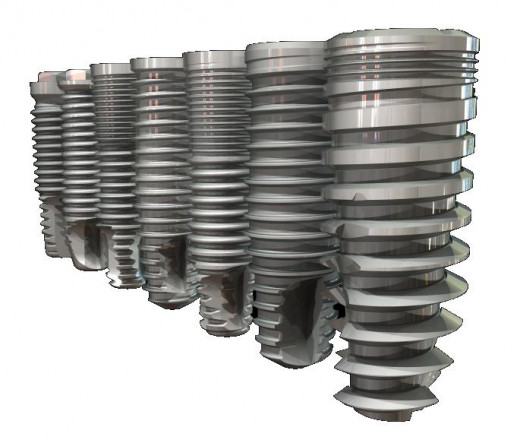
Dental implant types
Material:
Dental implants are always made of titanium. The reason for this is - in comparison to other metals - dental implants have a good mechanical and structural properties. Titanium is an ideal material for implants because of its advantages in terms of:
- hardness
- density
- compressive strength
- tensile strength
- Flexural strength
- elasticity
A titanium dental implant is strong enough to withstand the masticatory force.
Differences between dental implants available today are mainly based on their shape and surface texture. To increase the compatibility of the metal, the surface of the implant is treated by a special coating (eg, alumina radiation) or etching. Also, its possible to incorporate an active substances to stimulate bone growth and facilitate the healing.
Form:
Dental implants are available in different forms:
- Screw-type implants
- Cylinder-form implants
- Hollow implants
- Blade implants
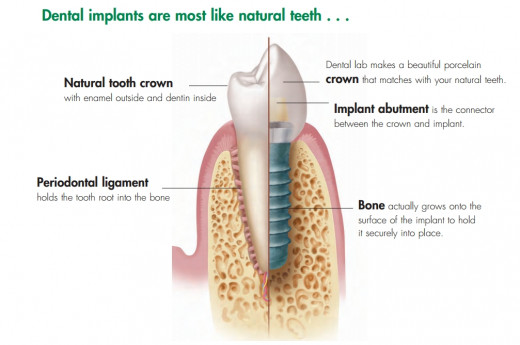
Advantages of dental implants
- Aesthetics.
- Restore Chewing function.
- Preservation of bone.
- Biocompatibility.
- Very good prognosis.
Smoking is known to be a major contributor to dental implant failure
Do you smoke?
Dental implants Contraindications
If you want to get dental implants, it is important to previously estimate the rate of success. Typical Contraindications for dental implants include:
- Metabolic diseases (eg, poorly controlled diabetes mellitus)
- Diseases of the kidneys, liver and bone or blood
- Nicotine, alcohol and drug abuse
- Acute infectious diseases
- A recent radiation therapy
- Pregnancy (especially in the first three months) and lactation
- Osteoporosis (brittle bones)
- Pathological changes in the oral mucosa and jaws
- Unfavorable jaw and occlusal relationships
- Dry mouth
The patient must have a good oral hygiene. Also special anatomical conditions in the oral cavity may Complicate implantation: a large tongue, and abnormal chewing movements. In addition, a sufficient bone thickness must be ensured in order to insert the implants into the jaw bone.
If there is no enough bone in the lower or upper jaw (lack of "bone bed" for the dental implant) a bony surgical preoperation may be needed. In this so-called bone augmentation the surgeon places bone in the jaw. The surgical techniques have so far refined in recent years and proved to be reliable, today, not enough bone is no longer an obstacle for a dental implant. The chance for a lasting treatment success is only slightly worse.
Dental implants are critically evaluate in adolescent patients because bone growth is not yet complete. In male adolescents, this process is completed at 20 years old. In girls, is completed at 18 years old.
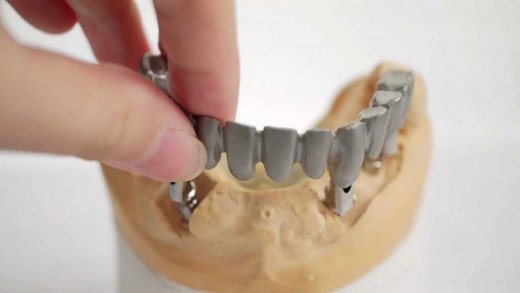
Superstructure
The superstructure corresponds to an artificial tooth crown that attach to the artificial tooth root - the dental implant. one tooth space can be closed with a single tooth implant, with larger spaces, two or more dental implants are necessary, then the dentist screw crowns or bridges as fixed prosthesis. An important goal is to maintain or restore a good chewing function.
If there is a few natural teeth in the mouth - or the jaw is completely toothless - combined fixed and removable superstructure may be needed.
Dental Implant Procedure
Both dentists and oral surgeons can do dental implant procedure.
First, the dentist makes an impression to the jaw. Based on this impression, he can measure and plan then what is the optimal location for the dental implants in the jaw and how best to place the superstructure (artificial tooth crown on the implant). The remaining teeth should be before implantation free of tooth decay and gum disease (periodontitis).
Using x-rays and a specially designed template sets the doctor dental implants during surgery in the bones. The mucous membrane it then sutured tightly over the hole. After about three months, the dentist (or oral surgeon) will check whether the implant is well healed into the bone. Pain is not to be expected during implantation, since the entire operation takes place under local anesthesia.Also the dentist may use a laser to open the gums for the insertion of dental implants. Since the laser can "weld" blood vessels immediately.
The superstructure is created by the dental technician in a dental laboratory. After healing (three months in the lower jaw, about six to eight months in the upper jaw), the dentist can put the finished superstructure on the implants. In some cases, the patient wear a temporary prosthesis in the healing period.

Tips and instruction after dental implant procedure
Most dental implants heal in the jawbone within the first six months after implantation and can remain there for many years. Just as the natural teeth, dental implants also require a daily oral care. A semi-annual professional dental cleanings by the dentist, is useful for a dental implant.
Immediately after implantation:
Until the anesthetic has subsided, you should not take hot food or drinks.
In the first week:
- Avoid physical activities (sports, bending, lifting, sauna, etc.).
- Avoid cigarettes smoking and alcohol, coffee, tea, and milk products drinking.
- Rinse your mouth after every meal with lukewarm water, but not the day of surgery itself
- Brush your teeth as usual, but please be extra careful with the dental implants.
- Do not use an electric toothbrush or an oral irrigator.
- Cool the painful areas outside only. Wrap For example, run a tea towel to a cooling pack before you hang it.
In the second to the sixth week
- Protect the area of the implant against pressure loads by tongue, fingers, or too hard-edged foods.
- You should still avoid physical activities and smoking.
- Clean your teeth so as advised by your dentist.
If you are unsure or feel overwhelmed with the care of your dental implants, talk to your dentist to it! He can give you useful care tips for everyday life.
Dental implant cost
Dental implant cost depond on where you living, it can range from $3,000 to $5,000 for single implant and it rarely covered by insurance.

